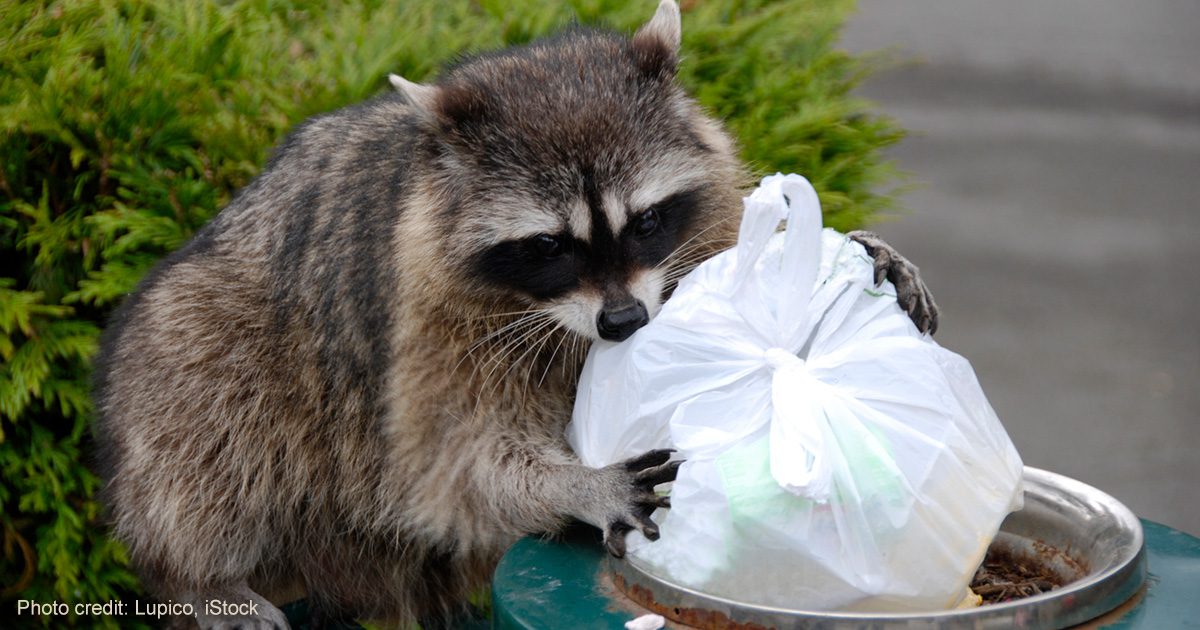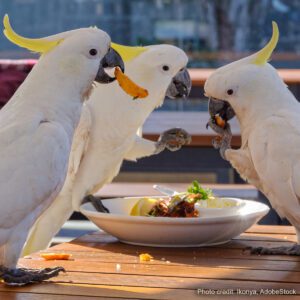
Mar 16, 2023 Human-Wildlife Interactions (and Conflicts) in Urban Environment
Some wildlife species have adapted successfully to urban environments and the presence of humans and their companion animals. Garbage cans are, or can be, a significant food source for urban wildlife and may be a source of human-wildlife conflict.
In Cape Town, South Africa, baboons have learned that outdoor garbage bins are a rich source of discarded food waste. In addition, fruit trees in gardens will attract wild baboons, but there are risks for wild baboons who raid gardens and garbage cans (one male had 70 pieces of buckshot, bullets, and pellets in his body when he was x-rayed). However, the rewards are sufficiently rich that baboons, led by the troop males, continue to raid gardens and garbage cans. Baboons have now learned that there are even richer food sources inside refrigerators in urban households. If residents leave any window in their home open, baboons may be able to gain access and raid the fridge, leaving a horrible mess of scattered food and baboon feces. Confronting a large (and cornered) male baboon in one’s kitchen on returning home is also not a welcome experience.
Raccoons in the US and Europe (where they have been introduced) are another urban species that have learned that garbage cans may be an excellent source of high-calorie food. It is a simple matter to prevent raccoon raiders, but one must remember the preventive measures. Bears are a more difficult challenge, and US homes in bear territory are advised to use bear-proof garbage containers. Even if bears are rare as they are around Washington, DC, one may come home to find that an intrepid bear has raided one’s bird feeder. WBI’s CEO had such an experience and recorded the event to prove to those family doubters that the event occurred.
 Birds have also learned to use human food sources. One of the most famous examples occurred in the UK, where an enterprising blue tit learned (sometime in the 1950s) that the new foil tops introduced to seal the pint bottles of milk delivered to British homes in the morning could be pierced to gain access to the rich cream that rose to the top of the bottle. This avian innovator then spread his knowledge to his fellow blue tits. However, the daily early morning milk delivery in glass bottles gradually gave way to plastic containers sold by supermarkets. The milk was kept fresh in home refrigerators, and milk-raiding blue tits had to adapt to other food sources. In 1975, 94% of the milk consumed in Britain was delivered in glass bottles to one’s doorstep. By 2012, only 4% of milk consumed was still delivered in glass bottles.
Birds have also learned to use human food sources. One of the most famous examples occurred in the UK, where an enterprising blue tit learned (sometime in the 1950s) that the new foil tops introduced to seal the pint bottles of milk delivered to British homes in the morning could be pierced to gain access to the rich cream that rose to the top of the bottle. This avian innovator then spread his knowledge to his fellow blue tits. However, the daily early morning milk delivery in glass bottles gradually gave way to plastic containers sold by supermarkets. The milk was kept fresh in home refrigerators, and milk-raiding blue tits had to adapt to other food sources. In 1975, 94% of the milk consumed in Britain was delivered in glass bottles to one’s doorstep. By 2012, only 4% of milk consumed was still delivered in glass bottles.
In Australia, Sydney’s residents are struggling to address a plague of garbage-raiding sulfur-crested cockatoos. The birds have learned that garbage cans are a rich food source and, according to an article in Science, the cockatoos and humans are now engaged in something of an arms race where the birds learn from each other how to get around the barriers installed by humans (who learn successful anti-cockatoo strategies from their friends and neighbors).


